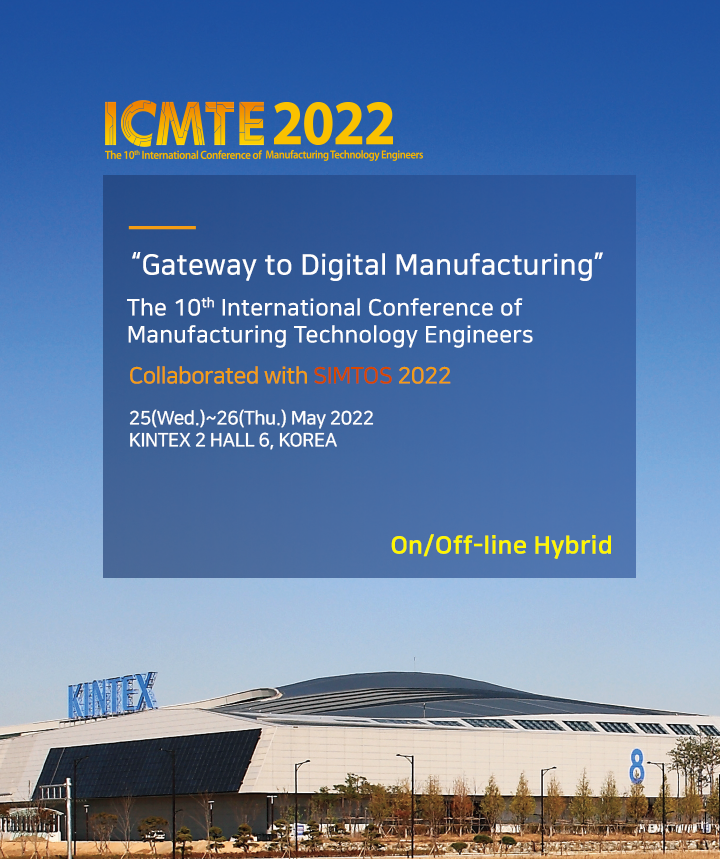 |
LIVE
Keynote Speech 1 Room C, 25-May (Wed), 10:00-11:00 First-and-Every-Print-Correct Metal Additive Manufacturing Prof. Steven Y. Liang
Biography
Prof. Steven Y. Liang is a Morris M. Bryan Jr. Professor in Mechanical Engineering for Advanced manufacturing Systems at Georgia Institute of Technology. He received his Ph.D. degree in Mechanical Engineering from the University of California at Berkeley in 1987. His research interests are in the areas of modeling, monitoring, and control of precision machining and the additive manufacturing processes and systems. His research work has been disseminated in over 650 archival articles, 5 books, and 40+ international conference keynotes. He served as the President of NAMRI/SME, the Chair of MED/ASME, and the President of publicly traded company of $6B revenue with global footprints. Presently, he is the Technical Editor of International Journal of Precision Engineering and Manufacturing and Editor-in-Chief of Journal of Manufacturing and Materials Processing. He is the recipient of many prestigious awards, including the Robert B. Douglas Outstanding Young Manufacturing Engineer Award of SME, Ralph R. Teetor Education Award of SAE, Blackall Machine Tool and Gage Award of ASME, Outstanding Service Award of ASME, Milton C. Shaw Manufacturing Research Medal of ASME, Most Influential Professor in Smart Manufacturing of SME, Outstanding Lifelong Service Award of SME, and Gold Medal of SME. He is a Fellow of ASME, SME, and AET.
Abstract
In view of its low production volume, additive manufacturing (AM) often requires the capability of process prediction and optimization to support short and effective process development cycles in achieving the first-and-every-print-correct goal. Current technology based upon FEM iterations and experimental phenomenology unfortunately suffer from long delivery times and vast uncertainties. At Georgia Tech recent developments have presented a physics-based computational mechanics platform for process prediction and optimization beyond the scopes of experimentation and FEM. This new methodology quantifies the thermodynamics, heat-transfer, and materials thermos-physical behaviors in powder bed and powder feed metal AM for closed-form solutions have been established for temperature distributions. Bounded-medium solutions have been established by folding boundary thermal balance conditions into the traditional semi-infinite medium solutions to compute material responses close to build edges without iterations. Subsequently the corresponding thermal stresses, residual stresses, microstructure, build distortion, porosity, surface roughness,and mechanical properties are expressed as explicit and algebraic functions of process parameters and powder properties, factoring in the effects of scan strategy, and powder packing. Extensive experimental validations are also presented. The solutions deliver more penetrating physics of the metal AM process, showing much higher accuracy, and requiring much less computational efforts, thus promising effective prediction and optimization for first-and-every-print-correct AM. |
 |
LIVE
Keynote Speech 2 Room C, 25-May (Wed), 11:00-12:00 Reconfigurable Assembly Systems and The Transition to Electric Vehicles Dr. J. Patrick Spicer
Biography
Dr. J. Patrick Spicer is Chief Technologist of Reconfigurable Assembly in the Manufacturing Systems Research Lab at General Motors Research and Development. He has been at GM Research and Development for 15 years. While at GM R&D, he has made important contributions in the areas of technical cost modeling, ultrasonic weld process monitoring for batteries, additive manufacturing, and has also invented 30 granted patents. He serves as a project manager for high-profile research initiatives focused on the development of reconfigurable assembly systems including advanced automated robotic systems for vehicle body manufacturing. He is an inventor with 30 granted patents. He has received doctorate in manufacturing engineering, a master’s in mechanical engineering, and a bachelor’s in industrial and operations engineering, from the University of Michigan.
Abstract
The transition to electric vehicles (EV) has begun in earnest on a global scale. The transition will require massive investments in new product development and new manufacturing systems. In addition to major investments in new electric propulsion systems, significant changes in vehicle structures will be needed to safely accommodate large battery packs while taking full advantage of new design freedoms that are afforded. Vehicle manufacturers must make important judgements on vehicle designs to provide products that consumers want while ensuring profitability. Even with EV technology changing rapidly, it’s not entirely clear what the best EV design will be. Vehicle manufacturers with the most agility to rapidly adapt their vehicle designs are more likely to lead the EV transition. In this talk, I will discuss the important role that reconfigurable assembly systems can play in providing automotive manufacturers with increased agility needed to be leaders in the EV transition. |
 |
LIVE
Keynote Speech 3 Room C, 26-May (Thu), 10:00-11:00 Off-Line and On-Line Volumetric Error Compensation of Machine Tools and Industrial Robots Prof. Robert G. Landers
Biography
Dr. Robert G. Landers is the Advanced Manufacturing Collegiate Professor in the Department of Aerospace and Mechanical Engineering at the University of Notre Dame. He was previously a Curators’ Distinguished Professor at the Missouri University of Science and Technology and served for three years as a program manager at the National Science Foundation working in the Dynamics, Controls, and System Diagnostics, Foundational Research in Robotics, Cyber Physical Systems, Future Manufacturing, and Leading Engineering for America’s Prosperity, Health, and Infrastructure (LEAP HI) programs. He received his Ph.D. degree in Mechanical Engineering from the University of Michigan in 1997. His research interests are in the areas of modeling, analysis, monitoring, and control of manufacturing processes, and in the estimation and control of lithium ion batteries and hydrogen fuel cells. He received the Society of Manufacturing Engineers’ Outstanding Young Manufacturing Engineer Award in 2004, the ASME Journal of Manufacturing Science and Engineering’s Best Paper Award in 2014, and the ASME Journal of Dynamic Systems, Measurement, and Control Best Paper Award in 2020. He is a Fellow of ASME, and a senior member of IEEE and SME.
Abstract
Due to inaccuracies in component fabrication and assembly, machine tools and industrial robots have geometric errors (i.e., difference between nominal and actual kinematic motions), which greatly contribute to the errors in parts fabricated on these machines, as well as unduly long process certification times. To compensate for machine tool geometric errors, the standard practice is to directly measure each error individually and, from these measurements, directly populate compensation tables found in the machine tool controller. The drawback to this method is that it is extremely slow due to long instrument set up times and does not capture the complexity (e.g., sagging, twisting) of large machine tools. To compensate for industrial robot geometric errors, circle point analysis is used where the errors of each joint are measured independently. While this method is fast, it still does not capture the complexity of robot kinematic errors. In addition, machine tools and industrial robots suffer from thermal deformations due to changes in ambient temperature and heat sources on the machine, and deflections between the tool and part due to processing forces. These error sources are very difficult to model and, thus, are typically ignored. This talk will discuss recent work on the volumetric error compensation of large machine tools and industrial robots used for manufacturing tasks A laser tracker is used to measure the machine tool and robot geometric errors over the entire visible joint space. A 6 Degree of Freedom geometric error model is constructed for every joint. Translational and rotational errors for each joint are described by a set of joint-position dependent basis functions and probability-based estimators are employed to identify the geometric error model coefficients. Based on this model, an optimization algorithm is used to populate compensation tables for machine tools, or the inverse Jacobian method is used to modify the joint commands for robots. In this talk we will discuss the details of the new volumetric error compensation methodology and provide several examples of machine tools and robots we have modeled and compensated for a variety of industrial partners. Also, we will discuss our most recent work in on-line compensation of industrial robots where errors are directly measured and compensated for during the operation. |
























